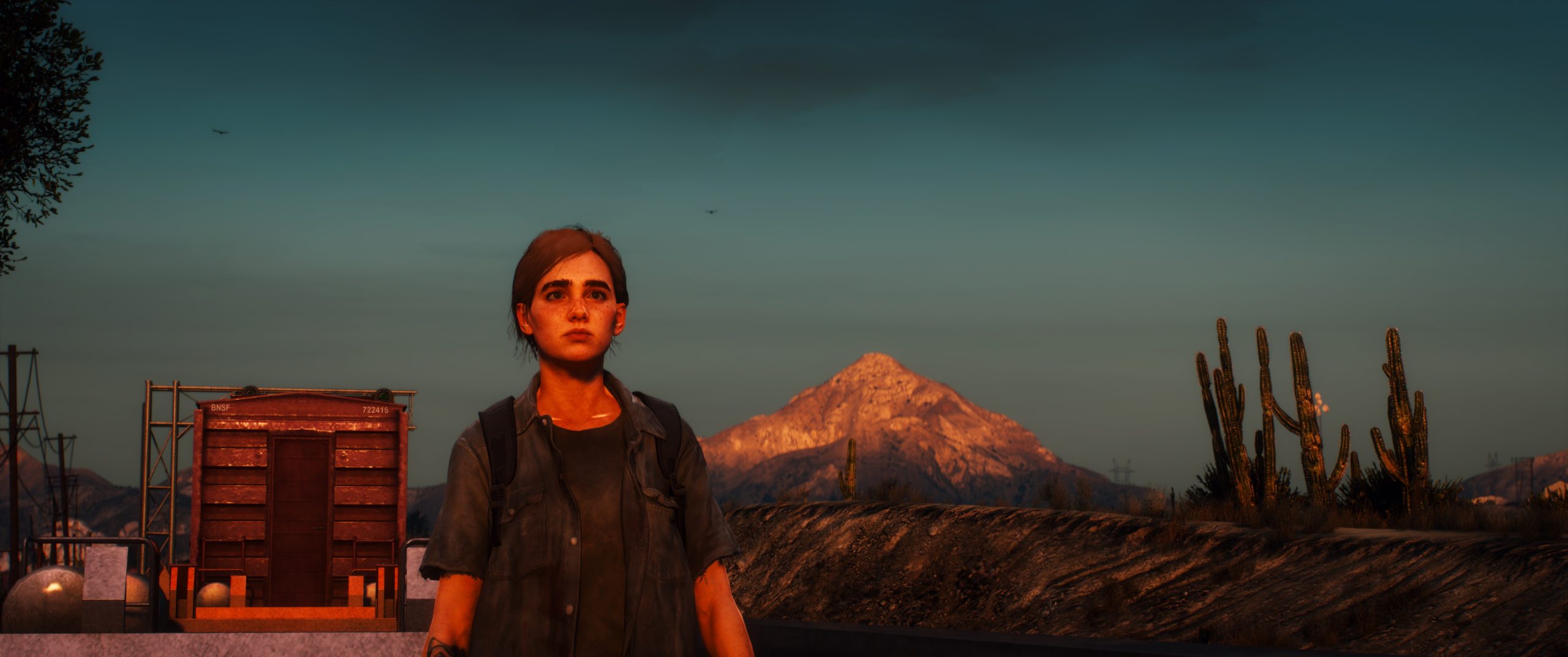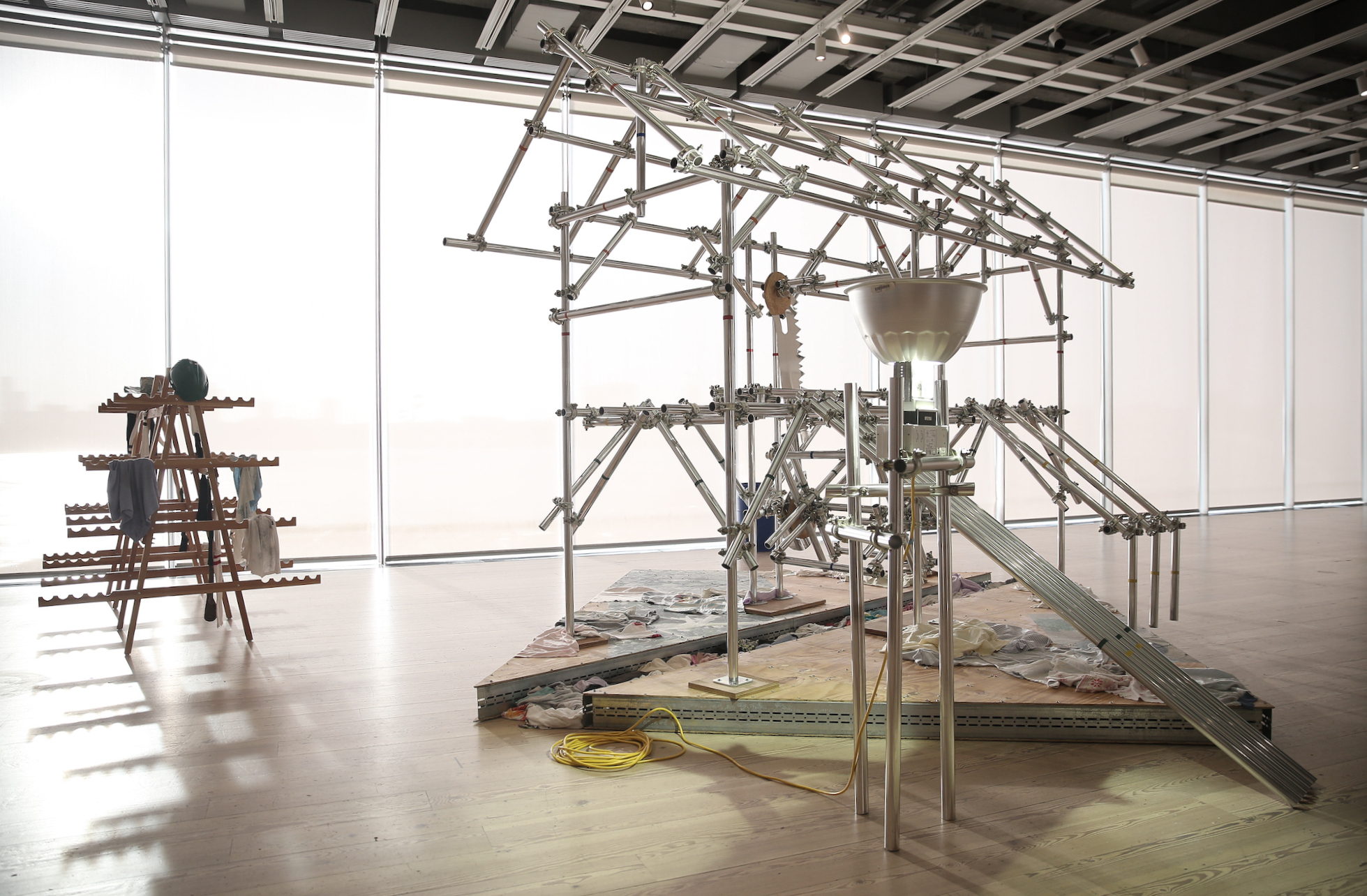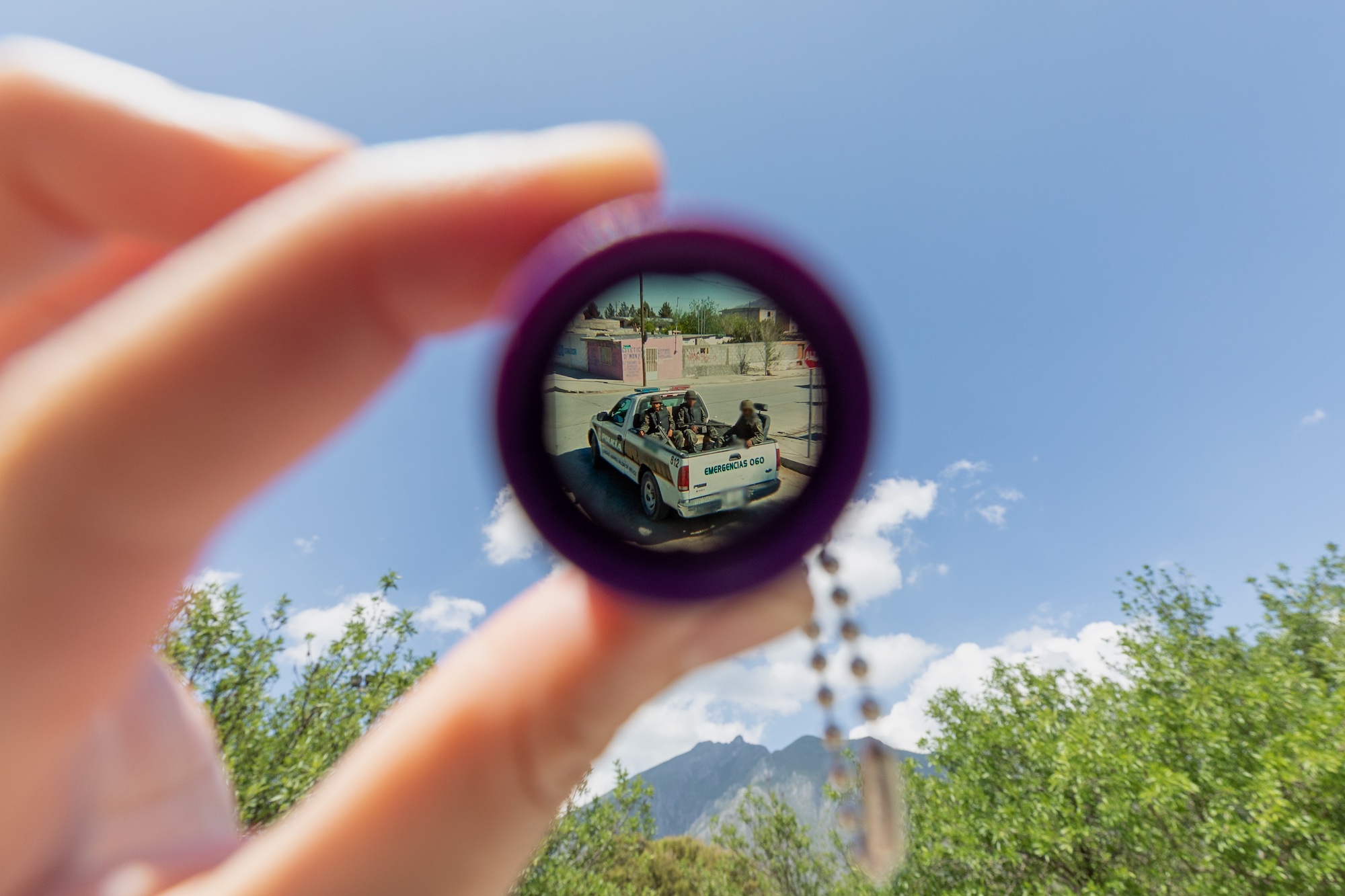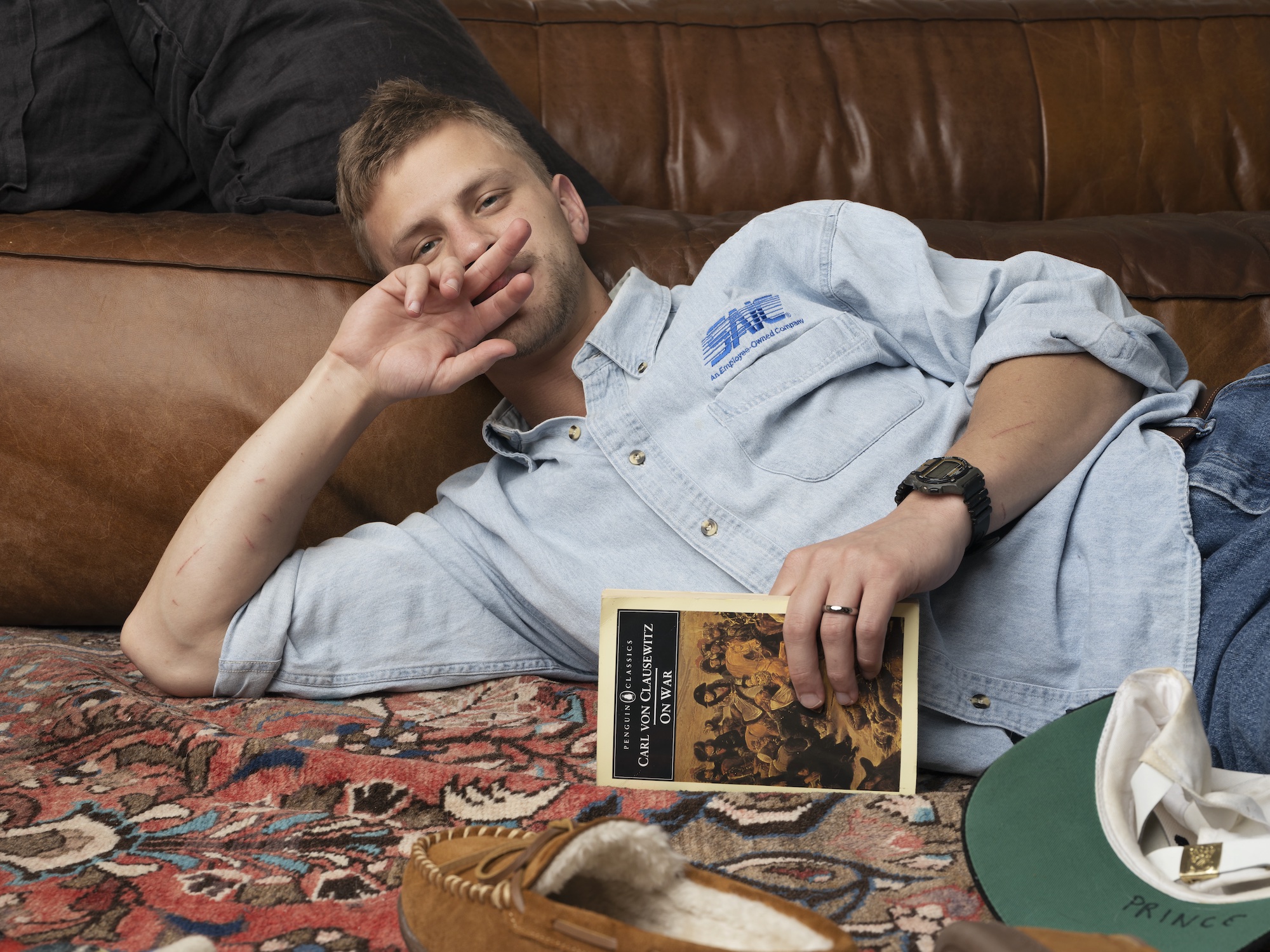“The Whitney Biennial has surveyed the landscape of American art,” the Whitney Museum says, “reflecting and shaping the cultural conversation, since 1932.” And what America does the 2022 edition reflect? For Dash, Brandon Sward traces the fraught line of the United States frontier through this year’s art and artists, from the homesteaders to the Department of Homeland Security.

Jacky Connolly, Descent into Hell, 2021. Video still. Multichannel color HD video with sound, 33:57 min. Courtesy of the artist.
On May 20, 1862, one year into the Civil War, President Abraham Lincoln signed the first Homestead Act. This law allowed any adult who had never taken up arms against the United States, including women, people of color, and immigrants who had applied for citizenship, to obtain federal land. During the next half-century, more than 125 million acres of “public” land, representing over 5% of the United States, became private property. But the roots of homesteading stretch back at least to Thomas Jefferson, who envisioned a country of “yeoman farmers” in opposition to the tangled aristocracies of Europe. The obvious oversight of this agenda is that these lands were already occupied. The potential social mobility “going West” offered to the huddled masses of the East Coast was only possible by purging the land of its previous stewards. Thus, the frontier combines hope and violence—two quintessential American qualities.
The porousness of this country’s boundaries, now as ever, poses special problems for an institution like the Whitney Museum of American Art, tasked with presenting its visual history. Every two years, these tensions play out in the Whitney Biennial. The current edition occurs at a particularly fraught moment: in the wake of the murder of George Floyd, an attack on the United States Capitol, and the ongoing disruptions of COVID-19, all of which Biennial curators David Breslin and Adrienne Edwards note in their exhibition essays. To these crises, they add the tensions around how changing borders influence who gets to be “American.”

Jason Rhoades, Sutter’s Mill, 2000. Polished aluminum pipes, polished aluminum, wood, metal profiles, metal clamps, blue plastic barrels, wood trestle, cleaning rags, clothing, backpacks, construction helmets, lamp, and laminated color prints (from Perfect World, 1999). Installation view, Whitney Biennial 2022: Quiet as It’s Kept, Whitney Museum of American Art, New York, April 6–September 5, 2022. Photo: Paula Court.
Once you start to look for it, the frontier begins to crop up everywhere. At times, this connection is rather overt, as in Jason Rhoades’s Sutter’s Mill (2000). Erected and dismantled over the course of the exhibition, this skeletal scaffolding is based on the eponymous sawmill in the Sierra Nevadas, made famous when a worker constructing it found gold there and sparked the California Gold Rush. Eventually, the mill was purchased by Nancy and Peter Gooch, a formerly enslaved couple. In 1942, the land on which the mill stood was taken by eminent domain to form the basis of the Marshall Gold Discovery State Historic Park. This Western conception of land as passing from owner to owner across time would be foreign to many societies on Earth. Consider wintercount_215_kisepîsim and mistranslate_wolftreeriver_ininîmowinîhk (both 2022) by Duane Linklater (Omaskêko Cree), a series of teepee covers left outside and tinted with natural dyes. This style of housing, distinguished by its ability to be quickly assembled and disassembled and adaptable to a wide range of geographical conditions, allowed tribes on the Great Plains to become fully nomadic horse cultures during the eighteenth and nineteenth centuries. On their surfaces, one can make out the faded script of Ininîmowin, an Algonquian language spoken by the Cree. Through his incorporation of organic and linguistic markers, Linklater connects people to land in an implicit critique of the model of ownership which Rhoades dramatizes in Sutter’s Mill.

Alejandro “Luperca” Morales, Juárez Archive (7512 Maravillas Street), 2020–ongoing. Novelty magnifying keychain containing 35mm slide, 2⅜ × 1½ × 1⅜ in. Courtesy of the artist. Photo: Michelle Lartigue.
One of the consequences of the buying and selling of land is the creation of borders to delineate ownership, often in arbitrary and inconvenient places. Though some would have us believe the world is becoming ever more interconnected, our current political moment has also highlighted the very real difficulties these boundaries can create, from the legal patchwork of a potentially post-Roe US to the contested Ukrainian regions of Luhansk and Donetsk. Biennial artist Alejandro Morales was unable to travel to his hometown of Ciudad Juárez due to coronavirus lockdown measures, prompting him to explore the city on Google Street View. The resulting piece, Juárez Archive (2020), juxtaposes scenes from everyday life with evidence of the drug war-fueled militarization of the US/Mexico border. His decision to display these images on 35mm slides in pocket viewfinders invites the viewer to confront this brutal reality face to face. On a museum floor dominated by huge sculptures, Morales’s work feels intimate and personal.
To be sure, this degree of militarization isn’t limited to the borderlands but has come to characterize much of the interior of the country as well, a fact Lucy Raven makes powerfully visible in her Demolition of a Wall (2022). Shot with a high-speed camera at a weapons testing facility in New Mexico, this video shows us a West of destruction rather than creation. In Raven’s slow-motion crucible, these walls and explosions receive a treatment usually reserved for only the most consequential cinematic moments, treating violence against the land a way reminiscent of violence against humans. Indeed, the demolition depicted is close to Los Alamos National Laboratory, birthplace of the first nuclear weapons, which work on a scale that far outpaces any controlled demolition.

Buck Ellison, Rain in Rifle Season, Distributions from Split-Interest Trusts, Price Includes Uniform, Never Hit Soft, 2003, 2021. Archival pigment print, 40 × 53⅓ in. Courtesy of the artist.
But, like any buildings, these military installations do not have agency—they’re created and sustained by elites such as Blackwater founder Erik Prince. Buck Ellison envisions the mercenary CEO as a young man on his Wyoming ranch in a series of staged photographs. The year is 2003 and the private military company has just received its first contracts for the wars in Iraq and Afghanistan. Although Prince and his soldiers have since been implicated in various war crimes, Ellison’s lounging, shirtless version of him is playful, even handsome. By sexualizing Prince, Ellison calls our attention to the interpenetration of masculinity, violence, and sexuality.
There is no shortage of artists in this Biennial who similarly attempt to make such cultural bedfellows visible. A grove of artificial, light-laced palms made specifically for the Whitney’s terrace, Alia Farid’s Palm Orchard (2022) references the famous date palms of Basra, hometown of the artist’s grandmother, that were destroyed during the Iran–Iraq War. While it occurred in a very different context than the post-9/11 US invasions of Iraq and Afghanistan, these wars underscore the status of the Middle East as a nexus of very old and hotly contested borders. Through these works, we can see how the social and political forces that turn the wheels of history manifest in individual lives, and how moments of great crisis for some are moments of great opportunity for others. x

Brandon Sward is an artist, writer, and doctoral candidate at the University of Chicago who lives and works in Los Angeles.